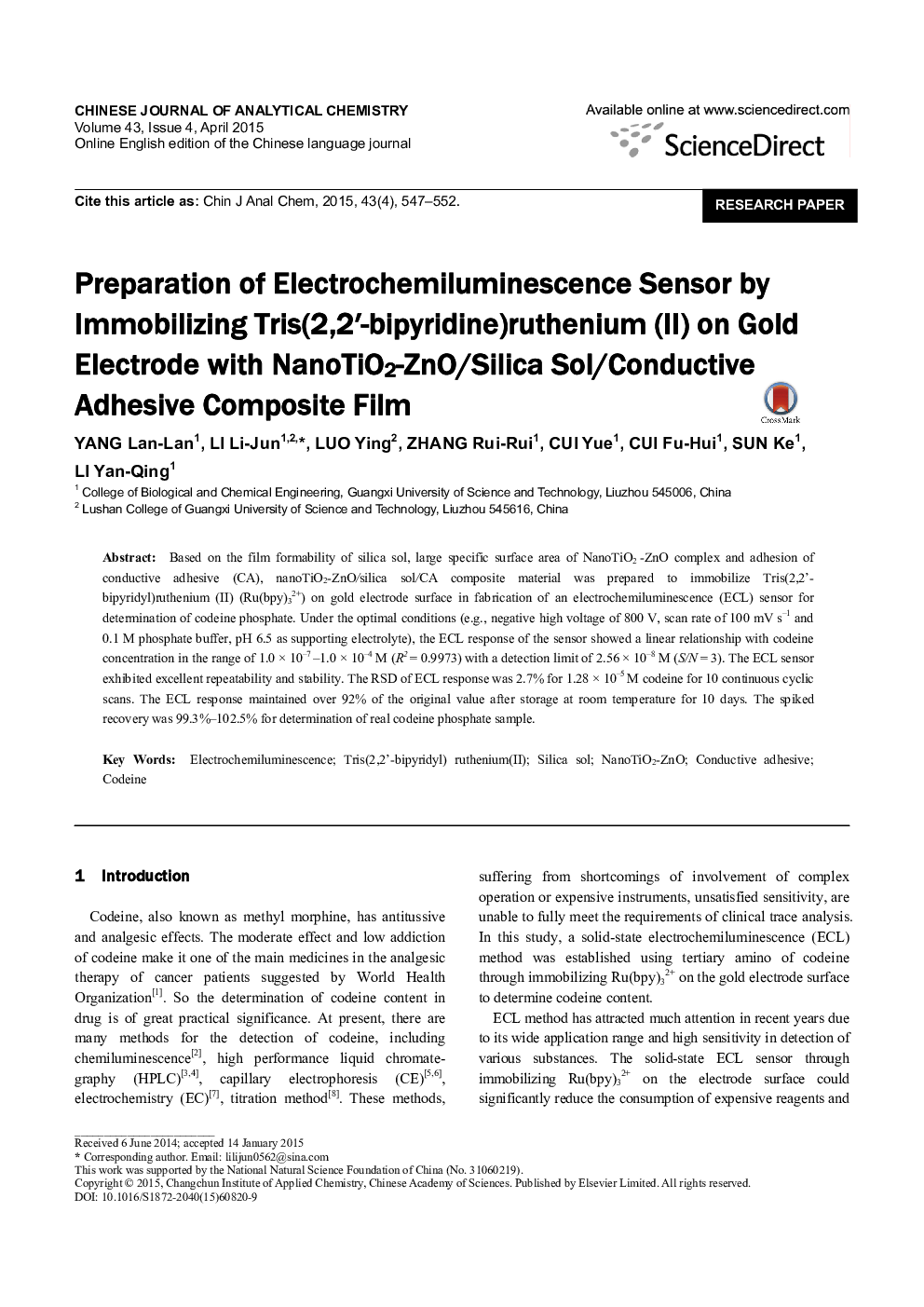| Article ID | Journal | Published Year | Pages | File Type |
|---|---|---|---|---|
| 1182074 | Chinese Journal of Analytical Chemistry | 2015 | 6 Pages |
Based on the film formability of silica sol, large specific surface area of NanoTiO2 -ZnO complex and adhesion of conductive adhesive (CA), nanoTiO2-ZnO/silica sol/CA composite material was prepared to immobilize Tris(2,2′- bipyridyl)ruthenium (II) (Ru(bpy)32+) on gold electrode surface in fabrication of an electrochemiluminescence (ECL) sensor for determination of codeine phosphate. Under the optimal conditions (e.g., negative high voltage of 800 V, scan rate of 100 mV s−1 and 0.1 M phosphate buffer, pH 6.5 as supporting electrolyte), the ECL response of the sensor showed a linear relationship with codeine concentration in the range of 1.0 × 10−7 −1.0 × 10−4 M (R2 = 0.9973) with a detection limit of 2.56 × 10−8 M (S/N = 3). The ECL sensor exhibited excellent repeatability and stability. The RSD of ECL response was 2.7% for 1.28 × 10−5 M codeine for 10 continuous cyclic scans. The ECL response maintained over 92% of the original value after storage at room temperature for 10 days. The spiked recovery was 99.3%–102.5% for determination of real codeine phosphate sample.
Under the optimal experimental conditions, the ECL intensity of the NanoTiO2−ZnO/Silica sol/CA−Ru(bpy)32+ modified gold electrode toward different concentrations of codeine was investigated with good linear relationship between peak intensity and codeine concentration in the range of 1.0 × 10−7 −1.0 × 10−4 M. The linear regression equation was I (counts) = 85.83 × 106C + 119.15, and the limit of detection (LOD) was calculated to be 2.56 × 10−8 M (S/N = 3).Figure optionsDownload full-size imageDownload as PowerPoint slide
